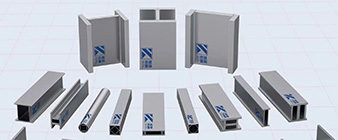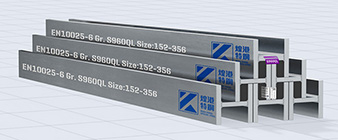Here is a summary of the performance and advantages of EN 1.4301 (AISI 304), EN 1.4307 (AISI 304L), and the differences between them:
Compared with 304L, the mechanical strength and hardness are higher;
Better resistance to wear and tear;
Suitable for applications requiring higher load capacity;
Good solderability, although slightly less than 304L;
Widely available and cost-effective.
Improved corrosion resistance, especially in welding areas;
Better weldability and high efficiency due to lower carbon content;
Suitable for applications in corrosive environments;
Good mechanical properties are retained despite welding;
Preferred components and structures for manufacturing.
Tensile strength: EN 1.4301(500-700 MPA)> EN 1.4307(450-650 MPA)
Yield strength: EN 1.4301(210-300 MPA)> EN 1.4307(170-250 MPA)
hardness: EN 1.4301(≤220hb)> EN 1.4307(≤200hb)
Corrosion resistance: EN 1.4307> EN 1.4301
In summary, EN 1.4301 (304) is preferred when higher mechanical strength and hardness are required, while EN 1.4307 (304L) is more suitable for applications with extensive welding or exposure to corrosive environments due to its improved endurance and corrosive. Selection depends on the specific requirements of the application.
Structure and Architecture:
Building frames, bridges, railings, facades and other load-bearing structures.
Preferred for its greater strength and durability.
Manufactured components and structures:
Welded components, tanks, pressure vessels and piping systems.
Weld resistance and corrosion resistance of preferred welding areas.
Chemical and petrochemical industry:
Equipment, vessels and pipelines used in corrosive environments.
Selected for its enhanced corrosion resistance.
Food, Beverage and Pharmaceutical Industries:
Processing equipment, storage tanks and other components.
Preferred for its superior corrosion resistance and cleanability.
Marine and Offshore Applications:
Shipbuilding, offshore platforms and other marine equipment.
Selected for its resistance to seawater and coastal environments.
-
 2024-9-29 2.4610 / UNS N06455 Nickel-based alloy hollow structural profiles for applications
2024-9-29 2.4610 / UNS N06455 Nickel-based alloy hollow structural profiles for applications -
 2024-9-24 High-strength H-piles UBP305*305*223kg/m/UBP305*305*283kg/m
2024-9-24 High-strength H-piles UBP305*305*223kg/m/UBP305*305*283kg/m -
 2024-7-16 Ultra-high strength steel profiles-laser welding
2024-7-16 Ultra-high strength steel profiles-laser welding -
 2024-9-20 Ti Gr 7/3.7235/UNS R52400 Application of structural profiles in chemical energy
2024-9-20 Ti Gr 7/3.7235/UNS R52400 Application of structural profiles in chemical energy -
2024-1-10 Stainless Steel – Austenitic – 1.4404 (316L) Bar and structural Section
-
 2024-9-25 1.4307 stainless steel hollow structural profiles
2024-9-25 1.4307 stainless steel hollow structural profiles -
 2024-9-16 Introduction to the advantages of EN standard 1.4401 stainless steel
2024-9-16 Introduction to the advantages of EN standard 1.4401 stainless steel



